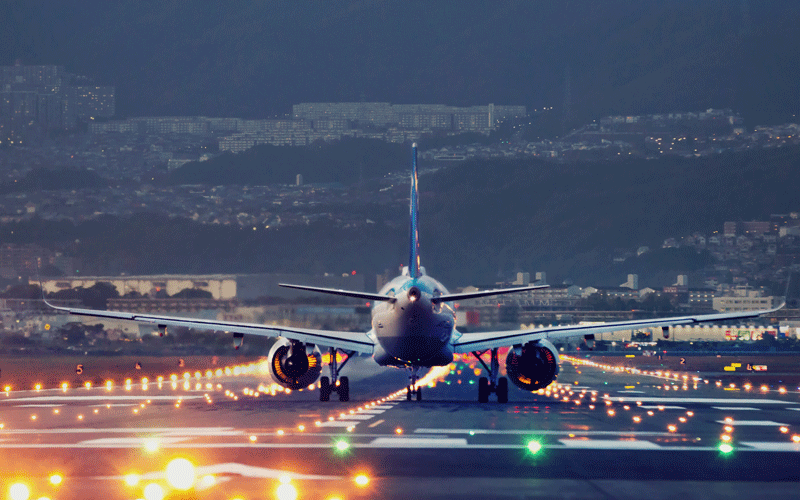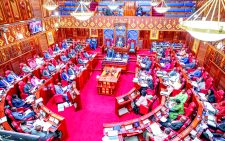Africa’s open skies ambition attracts international interest

John Otini
Foreign airlines are banking on share purchases of struggling African players to enter the continent’s growing aviation space ahead of the Single African Air Transport Market (SAATM).
Qatar Airlines’ pitch for 49 per cent stake in RwandAir and Virgin Atlantic’s desire to compete with Ethiopia Airlines for 25 per cent of South African Airlines, shows rising interest in the continent’s aviation market.
Africa’s aviation market was the fastest growing last year delivering four per cent growth as difficult times and competition saw depressed performance in developed markets.
“For Qatar to compete with Ethiopian Airlines, they needed the stake in RwandAir,” said Abdulkhani Ibrahim, founder of Shujaa Aviation Consultants.
One of the biggest issues with African airspace is the cost of tickets. “It is more expensive to travel to Somalia than to transit to Dubai from Nairobi,” he says.
Competition within Africa’s aviation industry continues to stiffen as different countries make efforts to increase their capacities and improve performance.
New planes
As part of its fleet improvement programme, Air Tanzania purchased six planes including the Boeing 787-8 Dreamliner and will add at least two more Bombardier Dash-8 Q400 planes.
“This will give them a comparative advantage by the time they are signing the SAATM agreement,” said Githae Mwaniki, a senior aviation consultant at Aviation Information Consultants.
Rwanda, having signed to commit to SAATM, has been actively looking for investors to build its capacity with regards to airport and technical resources.
Qatar Airways currently flies to more than 160 destinations worldwide, with more than 20 cities in Africa including Nairobi and Mombasa.
In 2019, Qatar Airways acquired 25 new aircraft and launched nine new destinations. They expanded into five main cities in Africa mainly Somalia, Ghana, Botswana and Angola.
With Qatar Airway’s vast reach, technical resources and experience, RwandAir’s acquisition by the award-winning gulf carrier will expand its capacities and increase its competitive advantage in the African aviation market against African giants such as EgyptAir and Ethiopian Airlines.
The launch of the SAATM in early 2018 seems to be spurring a range of activities within Africa’s aviation market with 2019 marking the beginning of active development as more African airlines increased the routes and destinations they covered as well as their capacities.
Reroutes
SAATM essentially provides for open skies within Africa, granting rights to African airlines to move within the continent from any point.
Currently, what happens for instance is, a flight from Nairobi to Johannesburg using Ethiopian Airlines, requires them to pass through Addis Ababa, thereby wasting resources and time.
SAATM would allow Ethiopian airlines to fly directly from Nairobi to Johannesburg, directly competing with the current rights holder Kenya Airways (KQ).
KQ is ranked second in terms of direct flights to African cities after Ethiopian Airlines putting it the middle of the market share battle.
In the last year, the Rwanda airline expanded its network in the African region flying to Kilimanjaro, Nairobi, Mombasa, Mogadishu, Juba, Bujumbura and Dar es Salaam. It also purchased two new 76-seater bombardier CRJ900 and two Airbus A330-800 Neos.
Reports by Routes online, an aviation network forum, show that Ethiopian Airlines introduced 18 new aircraft and six new international destinations to Asmara, Istanbul, Jakarta, Manchester, Mogadishu and Moscow in the 12 months to the end of May 2019.
RwandAir also sold a 60 per cent stake of Bugesera Airport to Qatar Airways. The airport is set to be the biggest in Rwanda on completion. Its estimated to cost $1.3 billion (Sh130.9 billion) up from $825 million (Sh83.1 billion).
SAATM aims to bring about full liberalisation of intra-African air transport services in terms of market access and enhance connectivity across the continent.
Full implementation of SAATM will facilitate competition in Africa’s aviation market, explaining the increased activity as different state carriers innovate to improve their comparative advantage in the market.









